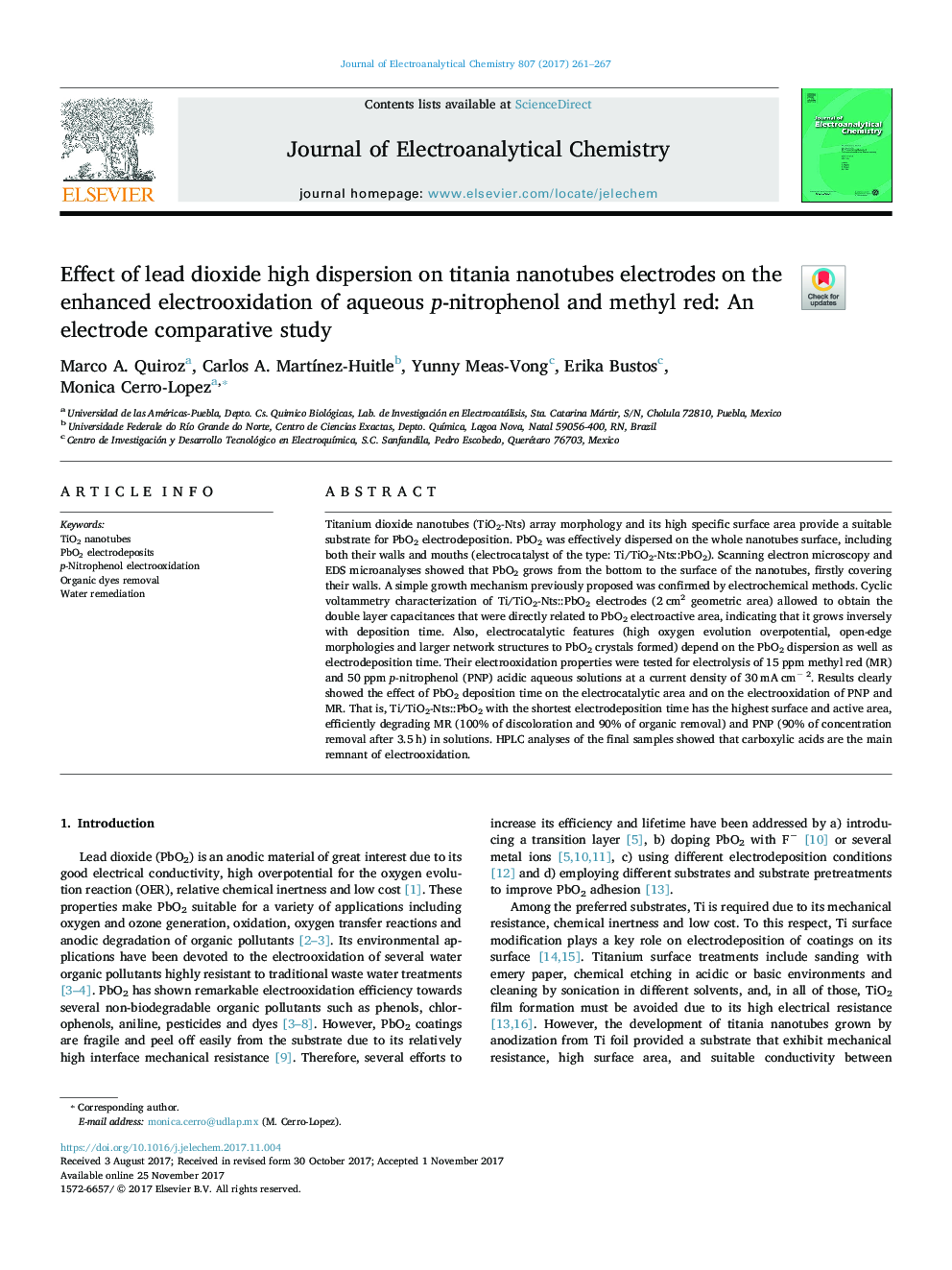| کد مقاله | کد نشریه | سال انتشار | مقاله انگلیسی | نسخه تمام متن |
|---|---|---|---|---|
| 6662302 | 1426568 | 2017 | 7 صفحه PDF | دانلود رایگان |
عنوان انگلیسی مقاله ISI
Effect of lead dioxide high dispersion on titania nanotubes electrodes on the enhanced electrooxidation of aqueous p-nitrophenol and methyl red: An electrode comparative study
دانلود مقاله + سفارش ترجمه
دانلود مقاله ISI انگلیسی
رایگان برای ایرانیان
موضوعات مرتبط
مهندسی و علوم پایه
مهندسی شیمی
مهندسی شیمی (عمومی)
پیش نمایش صفحه اول مقاله

چکیده انگلیسی
Titanium dioxide nanotubes (TiO2-Nts) array morphology and its high specific surface area provide a suitable substrate for PbO2 electrodeposition. PbO2 was effectively dispersed on the whole nanotubes surface, including both their walls and mouths (electrocatalyst of the type: Ti/TiO2-Nts::PbO2). Scanning electron microscopy and EDS microanalyses showed that PbO2 grows from the bottom to the surface of the nanotubes, firstly covering their walls. A simple growth mechanism previously proposed was confirmed by electrochemical methods. Cyclic voltammetry characterization of Ti/TiO2-Nts::PbO2 electrodes (2 cm2 geometric area) allowed to obtain the double layer capacitances that were directly related to PbO2 electroactive area, indicating that it grows inversely with deposition time. Also, electrocatalytic features (high oxygen evolution overpotential, open-edge morphologies and larger network structures to PbO2 crystals formed) depend on the PbO2 dispersion as well as electrodeposition time. Their electrooxidation properties were tested for electrolysis of 15 ppm methyl red (MR) and 50 ppm p-nitrophenol (PNP) acidic aqueous solutions at a current density of 30 mA cmâ 2. Results clearly showed the effect of PbO2 deposition time on the electrocatalytic area and on the electrooxidation of PNP and MR. That is, Ti/TiO2-Nts::PbO2 with the shortest electrodeposition time has the highest surface and active area, efficiently degrading MR (100% of discoloration and 90% of organic removal) and PNP (90% of concentration removal after 3.5 h) in solutions. HPLC analyses of the final samples showed that carboxylic acids are the main remnant of electrooxidation.
ناشر
Database: Elsevier - ScienceDirect (ساینس دایرکت)
Journal: Journal of Electroanalytical Chemistry - Volume 807, 15 December 2017, Pages 261-267
Journal: Journal of Electroanalytical Chemistry - Volume 807, 15 December 2017, Pages 261-267
نویسندگان
Marco A. Quiroz, Carlos A. MartÃnez-Huitle, Yunny Meas-Vong, Erika Bustos, Monica Cerro-Lopez,